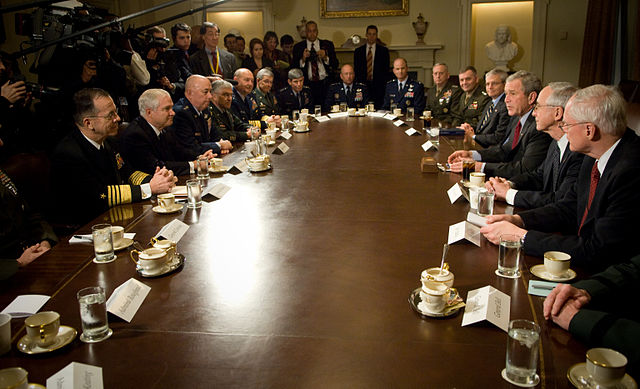United States Cyber Command
United States Cyber Command (USCYBERCOM) is one of the eleven unified combatant commands of the United States Department of Defense (DoD). It unifies the direction of cyberspace operations, strengthens DoD cyberspace capabilities, and integrates and bolsters DoD's cyber expertise which focus on securing cyberspace.
Image: General Keith B. Alexander in service uniform
Image: Rogers 2018
Image: General Paul M. Nakasone (NSA)
Image: Gen Timothy D. Haugh
Unified combatant command
A unified combatant command, also referred to as a combatant command (CCMD), is a joint military command of the United States Department of Defense that is composed of units from two or more service branches of the United States Armed Forces, and conducts broad and continuing missions. There are currently 11 unified combatant commands, and each is established as the highest echelon of military commands, in order to provide effective command and control of all U.S. military forces, regardless of branch of service, during peace or during war time. Unified combatant commands are organized either on a geographical basis or on a functional basis, e.g., special operations, force projection, transport, and cybersecurity. Currently, seven combatant commands are designated as geographical, and four are designated as functional. Unified combatant commands are "joint" commands and have specific badges denoting their affiliation.

Commanders of unified and specified combatant command during an annual meeting with Chairman of the Joint Chiefs of Staff and members of the Joint Chiefs of Staff at The Pentagon, Joint Chiefs of Staff Room also known as "The Tank" on January 15, 1981.
President George W. Bush (sitting third from the right) and Secretary of Defense Robert Gates (sitting second from the left) meeting with the joint chiefs and combatant commanders
Image: Gen Michael E. Langley
Image: Michael E. Kurilla (4)








